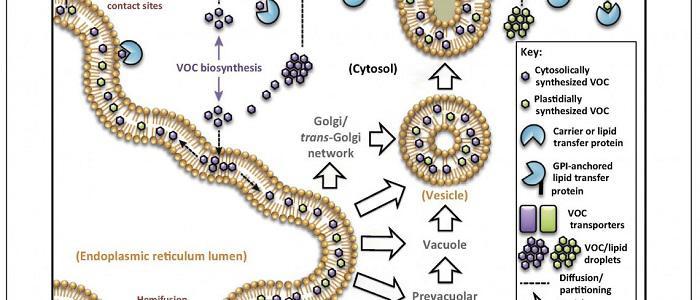The finding could help researchers boost plant health and defenses, develop new ways to manage pests, engineer smells and flavors and control the timing and release of volatiles.
The findings also could overturn the traditional model of volatile emission as a process that occurs solely by diffusion
The researchers hypothesized that biological mechanisms actively lower volatile concentrations in membranes, which would also account for a problem not addressed by the traditional diffusion model.
The study also looked at how volatiles, which are averse to water, can travel from their point of origin across the plant cell's water-based cytosol and aqueous cell wall.
"It's practically impossible for simple diffusion to do this. Plants clearly need some molecular players to help get these compounds out of the cell. This is a completely new way to think about this important biological process," Purdue University Biochemistry Professor Natalia Dudareva said.
The researchers proposed several methods for volatile transport based on how other hydrophobic compounds travel in the cell, including ferrying across the cytosol in the fatty layer of circular structures known as vesicles and traveling along networks of chutelike membranes.
Purdue University in West Lafayette, Indiana, is the flagship university of the six-campus Purdue University system. Purdue enrolls more than 39,000 students.




 Alerts Sign-up
Alerts Sign-up